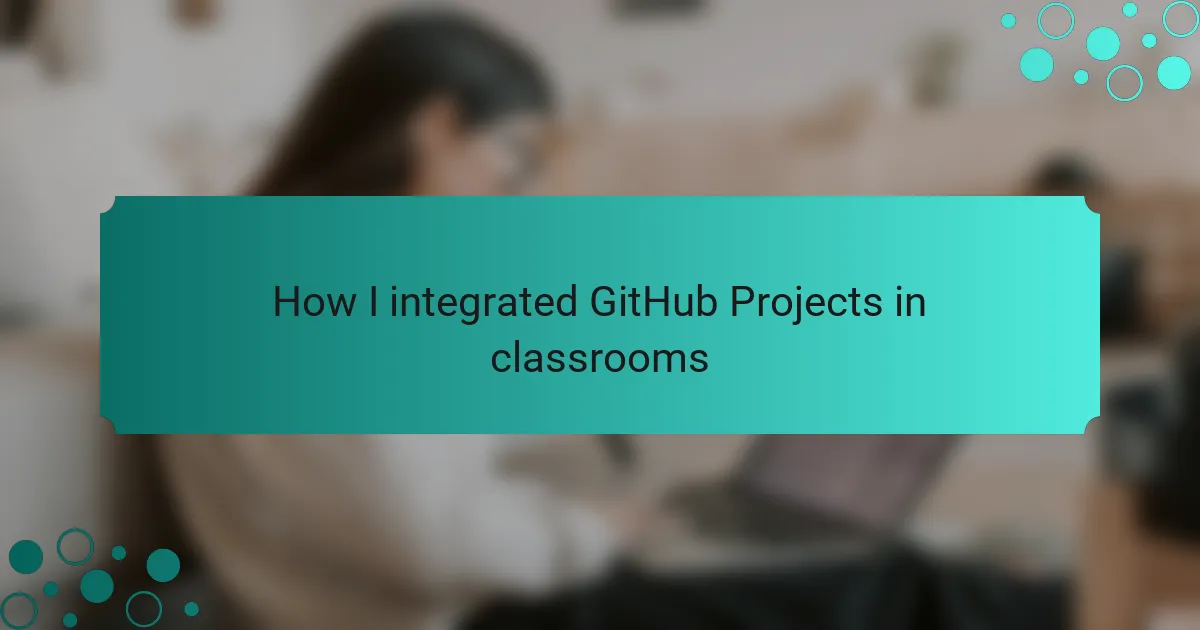Key takeaways
- GitHub Projects enhances collaboration, accountability, and organization, transforming how students manage their workload.
- Key elements of project management in education include task breakdown, team collaboration, time management, progress tracking, and feedback loops.
- Real-world applications in the classroom foster confidence, team skills, and proactive learning among students.
- Positive student feedback emphasizes increased motivation, understanding of version control, and the significance of teamwork in programming.
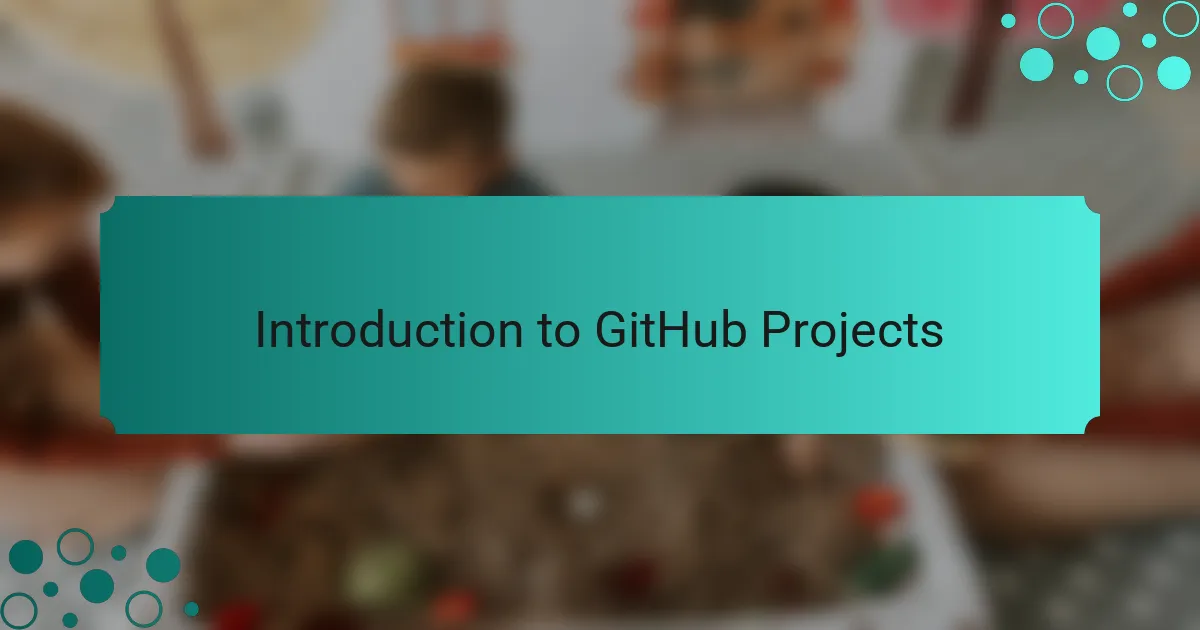
Introduction to GitHub Projects
GitHub Projects is an incredibly powerful tool that transforms how teams manage their workflows. I remember the first time I introduced it to my classroom; the students were instantly captivated by the visual way it organized tasks. It felt like unlocking a new level in their programming journey.
What I find particularly fascinating about GitHub Projects is its flexibility. It allows students to break down larger assignments into manageable chunks. This isn’t just organizing for the sake of organization; it promotes collaboration and transparency. How often have you had a group project where communication fell apart? GitHub Projects can help bridge that gap.
Using GitHub Projects also encourages accountability among students. They can easily track what they’re working on and see the overall progress of their projects. I often challenge my students to reflect on their contributions and ask, “What will you accomplish today?” This simple question helps them take ownership of their work while beautifully integrating technology into their learning experience.
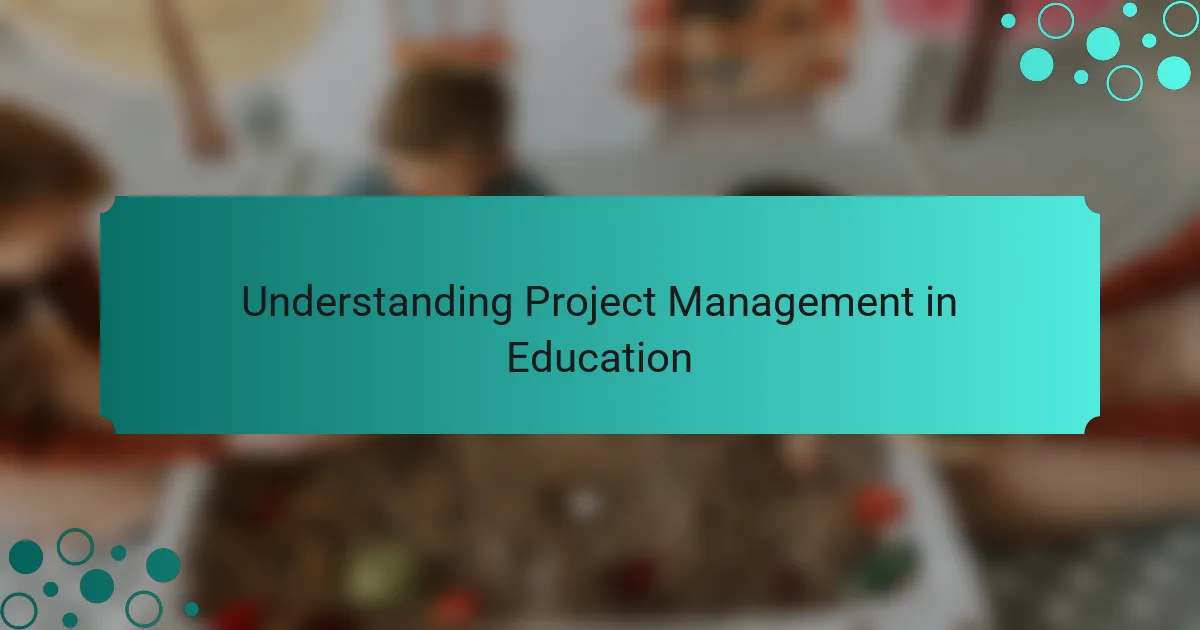
Understanding Project Management in Education
In my experience as an educator, I’ve found that project management in education plays a crucial role in nurturing students’ problem-solving skills. When I first introduced GitHub Projects to my classroom, I noticed students became far more organized in their approach to tasks. They started breaking down complex projects into manageable parts, which helped them stay focused and motivated.
One particularly memorable project was a collaborative coding assignment. By mapping out their tasks on GitHub, students not only learned to manage their time effectively but also experienced the satisfaction of completing their goals together. This clarity in project management turned what could have been a chaotic endeavor into a structured and fun learning experience.
Key Elements of Project Management in Education:
– Task Breakdown: Dividing projects into smaller, manageable tasks fosters clarity.
– Team Collaboration: Students learn to work together effectively, sharing responsibilities.
– Time Management: Setting deadlines helps students develop discipline and accountability.
– Progress Tracking: Visual tools like Kanban boards keep everyone informed on the project’s status.
– Feedback Loops: Regular check-ins and peer reviews enhance learning and collaboration.
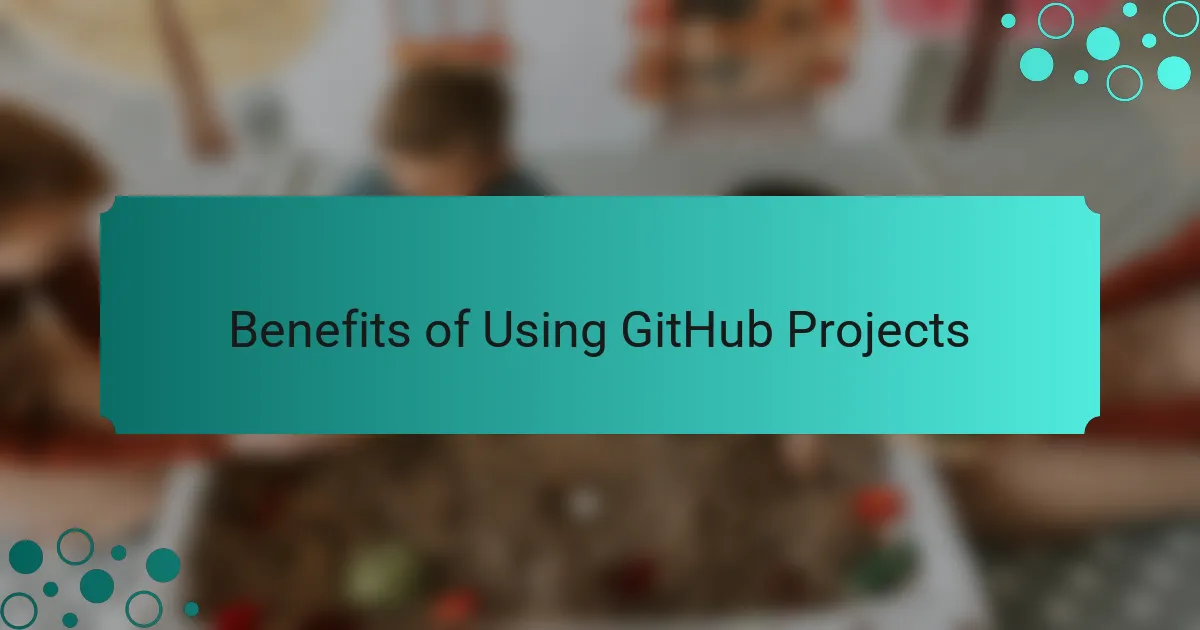
Benefits of Using GitHub Projects
Using GitHub Projects in the classroom has been a transformative experience for me and my students. For one, it enhances collaboration; students can easily work together, regardless of their location. I remember a particular project where my class collaborated from different homes. Their excitement as they pushed updates and discussed vibrant ideas was truly heartwarming.
Moreover, GitHub Projects promotes organization and clarity. Tasks and deadlines are easily managed through visual boards, allowing students to see their progress in real-time. I found this feature particularly useful when guiding students on how to split larger projects into manageable tasks, which alleviated their stress significantly during crunch times.
Here’s a quick comparison of traditional project management versus using GitHub Projects:
| Feature | Traditional Project Management | GitHub Projects |
|---|---|---|
| Collaboration | Limited; relies on face-to-face interactions | Seamless; works from anywhere |
| Organization | Physical boards or endless emails | Visual task boards with real-time updates |
| Version Control | Difficult to track changes | Easy tracking of updates and contributions |
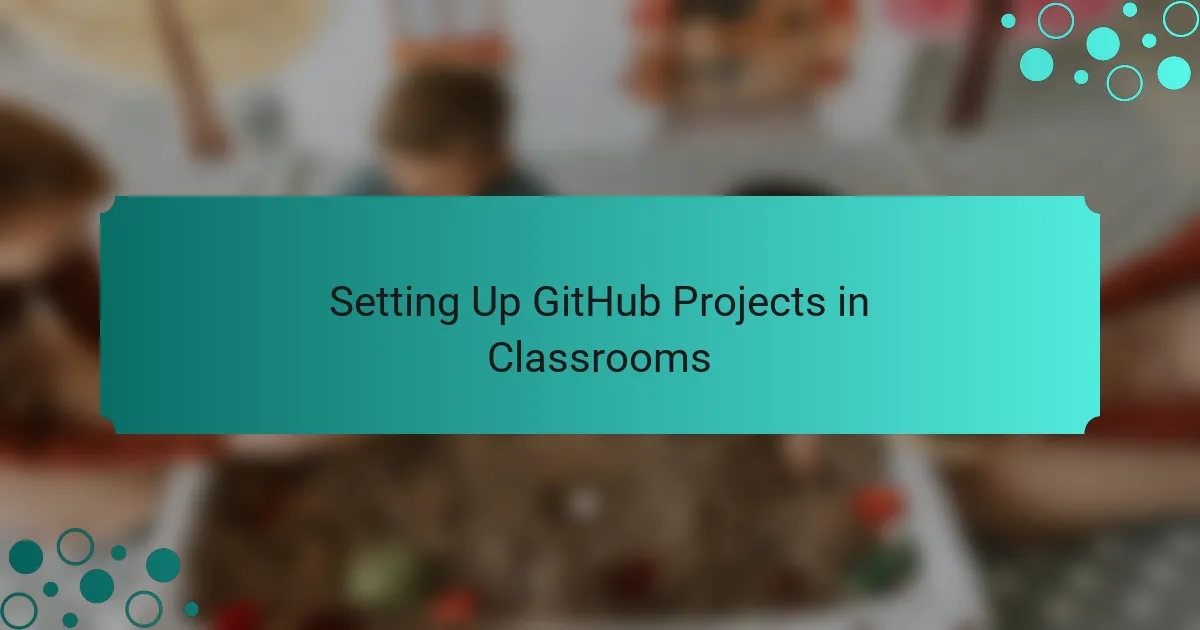
Setting Up GitHub Projects in Classrooms
When it comes to setting up GitHub Projects in the classroom, the initial steps are crucial. I remember my first day introducing it; I gathered students around the computer and created a demo project live. Watching their eyes light up as tasks appeared on the screen was a moment I’ll never forget. It showcased how straightforward technology can be when integrated smoothly into learning.
One effective approach I’ve found is to start with a simple project. Instead of diving straight into complex coding, I often begin with something relatable, like a class event. This allows students to visualize how GitHub Projects organizes their thoughts and tasks into manageable pieces. There’s something rewarding about seeing their ideas transform on a digital board; it instills a sense of ownership that’s hard to replicate.
Additionally, I make sure to involve students in setting up the project boards. Asking them, “What features would you find helpful?” sparks engagement right from the start. When students feel a part of the process, they not only understand the tool better, but they also take pride in using it, which enhances their learning experience immensely.
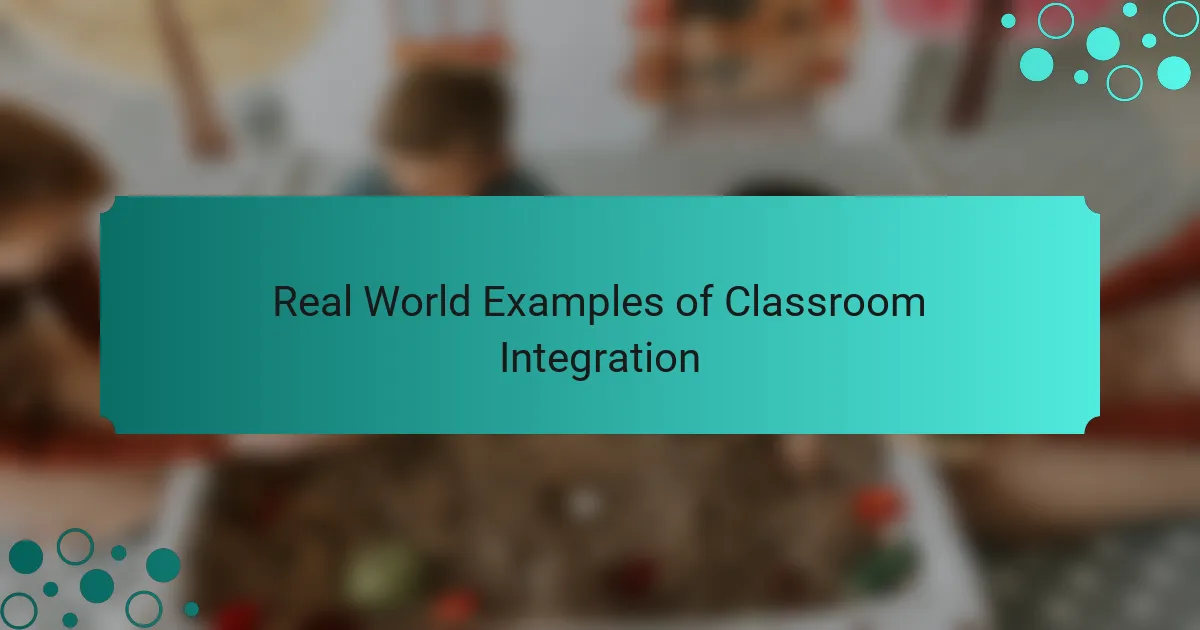
Real World Examples of Classroom Integration
In my classroom, one memorable project involved building a simple web application. We used GitHub Projects to manage tasks, and it was amazing to see students take on specific roles based on their strengths. I remember a student who was typically shy stepping up as the main communicator, feeling empowered to guide their peers through the project. This not only showcased their skills but also built their confidence in collaboration.
Another instance was during our annual science fair project. We assigned groups various experiment ideas and used GitHub Projects to organize their tasks. Watching them visually plot out their responsibilities was enlightening. They became more proactive, checking their boards and seeking feedback from each other. It really changed the dynamic from passive learning to active participation, which was a thrill to witness.
I also introduced GitHub Projects during a community service initiative, where students planned a local event. They created a detailed project timeline, complete with milestones. One day, I overheard a student excitedly sharing, “Look how much we’ve accomplished!” moments like these reaffirm the impact of project management tools. It makes me wonder, how can technology continue to shape our classrooms for the better?
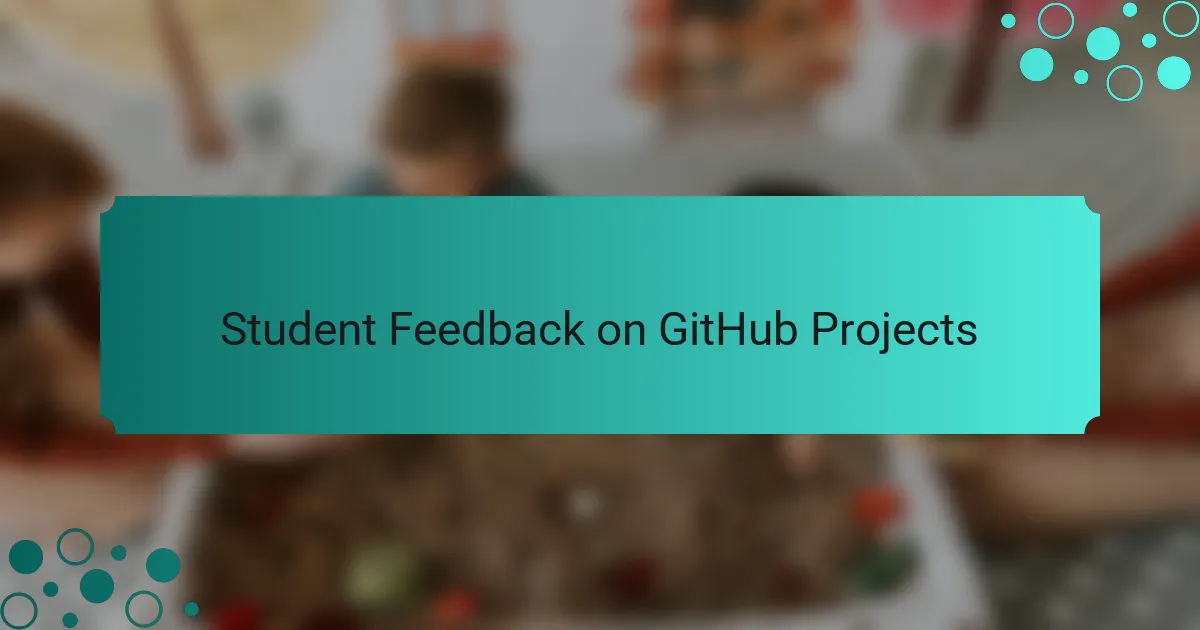
Student Feedback on GitHub Projects
Student feedback on GitHub projects has been overwhelmingly positive, highlighting the real-world relevance of their assignments. I recall a student sharing how using GitHub transformed their understanding of collaboration. Instead of working in isolation, they appreciated engaging with peers, leading to richer insights and better solutions.
From my experience, students often express these thoughts:
- Increased motivation due to the hands-on nature of projects
- Enhanced understanding of version control and coding best practices
- Greater pride in their work when seeing their code live on GitHub
- Recognition of the importance of teamwork in programming
- A desire to continue working with GitHub for personal projects post-class
This feedback reassures me that integrating tools like GitHub not only improves technical skills but also fosters a collaborative mindset among students.
